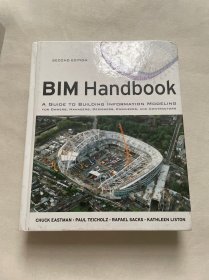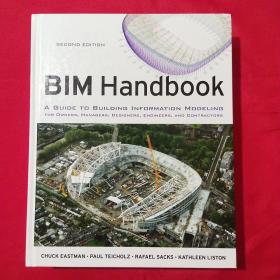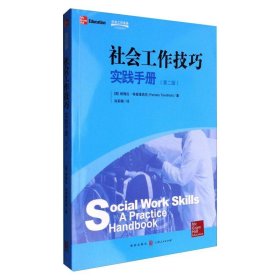
BIM Handbook:A Guide to Building Information Modeling for Owners, Managers, Designers, Engineers and Contractors
英文原版
¥ 120 八五品
仅1件
作者Chuck Eastman;Paul Teicholz;Rafael Sacks;Kathleen Liston
出版社Wiley
出版时间2011-04
版次1
装帧精装
货号8-1-2-4
上书时间2024-05-19
- 最新上架
商品详情
- 品相描述:八五品
- 少版权页
图书标准信息
- 作者 Chuck Eastman;Paul Teicholz;Rafael Sacks;Kathleen Liston
- 出版社 Wiley
- 出版时间 2011-04
- 版次 1
- ISBN 9780470541371
- 装帧 精装
- 开本 16开
- 纸张 胶版纸
- 页数 626页
- 【内容简介】
-
"The BIM Handbook is an extensively researched andmeticulously written book, showing evidence of years of work ratherthan something that has been quickly put together in the course ofa few months. It brings together most of the current informationabout BIM, its history, as well as its potential future in oneconvenient place, and can serve as a handy reference book on BIMfor anyone who is involved in the design, construction, andoperation of buildings and needs to know about the technologiesthat support it. The need for such a book is indisputable, and itis terrific that Chuck Eastman and his team were able to step up tothe plate and make it happen. Thanks to their efforts, anyone inthe AEC industry looking for a deeper understanding of BIM nowknows exactly where to look for it."-AECbytes book review, August28, 2008(www.aecbytes.com/review/2008/BIMHandbook.html)
Discover BIM: A better way to build better buildings
Building Information Modeling (BIM) offers a novel approach todesign, construction, and facility management in which a digitalrepresentation of the building process is used to facilitate theexchange and interoperability of information in digital format. BIMis beginning to change the way buildings look, the way theyfunction, and the ways in which they are designed and built.
The BIM Handbook, Second Edition provides an in-depthunderstanding of BIM technologies, the business and organizationalissues associated with its implementation, and the profoundadvantages that effective use of BIM can provide to all members ofa project team. Updates to this edition include:
Completely updated material covering the current practice andtechnology in this fast-moving field
Expanded coverage of lean construction and its use of BIM, withspecial focus on Integrated Project Delivery throughout thebook New insight on the ways BIM facilitates sustainablebuilding
New information on interoperability schemas and collaborationtools
Six new case studies
Painting a colorful and thorough picture of the state of the artin building information modeling, the BIM Handbook, Second Editionguides readers to successful implementations, helping them to avoidneedless frustration and costs and take full advantage of thisparadigm-shifting approach to construct better buildings thatconsume fewer materials and require less time, labor, and capitalresources. - 【作者简介】
-
Chuck Eastman is a Professor in the Colleges of Architectureand Computing at Georgia Institute of Technology, Atlanta, andDirector of the Digital Building Laboratory, a university-industryconsortium, where heleads research in IT in building design andconstruction. He has been active in building modeling researchsince the 1970s and currently works with a variety of industrygroups developing BIM technology.
Paul Teicholz is Professor Emeritus at Stanford University. Aftertwenty-five years innovating with IT solutions in the constructionindustry, he founded the Center for Integrated Facility Engineering(CIFE) at Stanford in 1988 and directed that program for tenyears.He was named the Construction Management "Man of the Year" by theAmerican Society of Civil Engineers in 1985 and awarded the HenryC. Turner Prize for Innovation in Construction Technology by theNational Building Museum in 2006.
Rafael Sacks is an Associate Professor in Structural Engineeringand Construction Management at Technion–Israel Institute ofTechnology. He founded and leads the Virtual Construction and BIMLaboratory at the Israel National Building Research Institute, andhas conducted primary and applied BIM research for industry,government, and public organizations in North America, Europe, andIsrael.
Kathleen Liston is CEO of Eco Offsite, a modular constructioncompany. She co-founded Common Point Technologies, Inc., aconstruction simulation software company. She has worked with avariety of organizations, including Autodesk, Walt Disney, DPRConstruction, and Mortenson Construction, developing technologiesand processes to implement BIM. She has a PhD and master's fromStanford University in civil and environmental engineering and abachelor of architecture from the University of Notre Dame. - 【目录】
-
Foreword.
Preface.
Chapter 1 BIM Handbook Introduction.
1. 0 Executive Summary.
1.1 Introduction.
1.2 The Current AEC Business Model.
1.3 Documented Inefficiencies of Traditional Approaches.
1.4 BIM: New Tools and New Processes.
1.5 What Is Not BIM Technology.
1.6 What Are the Benefits of BIM? What Problems Does ItAddress?
1.7 What Challenges Can Be Expected?
1.8 Future of Designing and Building with BIM (Chapter 8).
1.9 Case Studies (Chapter 9).
Chapter1 Discussion Questions.
Chapter 2 BIM Design Tools and Parametric Modeling.
2.0 Executive Summary.
2.1 The Evolution to Object-based Parametric Modeling.
2.2 Parametric Modeling of Buildings.
2.3 Beyond Parametric Shapes.
2.4 BIM Environments, Platforms and Tools.
2.5 Overview of the Major BIM Design Platforms.
2.6 BIM Platforms.
2.7 Lightweight Modeling Applications.
2.8 Conclusion.
Chapter 2 Discussion Questions.
Chapter 3 Interoperability.
3.0 Executive Summary.
3.1 Introduction.
3.2 Different Kinds of Exchange Formats.
3.3 Background of Product Data Models.
3.4 Other Efforts Supporting Standardization.
3.5 The Evolution from File-based Exchange to Building ModelRepositories.
3.7 Summary.
Chapter 3 Discussion Questions.
Chapter 4 BIM for Owners and Facility Managers.
4.0 Executive Summary.
4.1 Introduction: Why Owners Should Care About BIM.
4.2 BIM Application Areas for Owners.
4.5 BIM Tool Guide for Owners.
4.6 An Owner and Facility Manager’s Building Model.
4.7 Leading the BIM Implementation on a Project.
4.8 Barriers to Implementing BIM: Risks and Common Myths.
4.9 Guidelines and Issues for Owners to Consider When AdoptingBIM.
Chapter 4 Discussion Questions.
Chapter 5 BIM for Architects and Engineers.
5.0 Executive Summary.
5.1 Introduction.
5.2 Scope of Design Services.
5.3 BIM Use in Design Processes.
5.5 Considerations in Adoption for Design Practice.
5.6 New and Changed Staffing within Design Firms.
Chapter 5 Discussion Questions.
Chapter 6 BIM for the Construction Industry.
6.0 Executive Summary.
6.1 Introduction.
6.2 Types of Construction Firms.
6.3 Information Contractors Want from BIM.
6.4 Processes to Develop a Contractor Building InformationModel.
6.5 Reduction of Design Errors Using Clash Detection.
6.6 Quantity Takeoff and Cost Estimating.
6.7 Construction Analysis and Planning.
6.8 Integration with Cost and Schedule Control and OtherManagement Functions.
6.9 Use for Offsite Fabrication.
6.10 Use of BIM Onsite: Verification, Guidance, and Tracking ofConstruction Activities.
6.11 Synergies of BIM and Lean Construction.
6.12 Implications for Contract and Organizational Changes.
6.12 BIM Implementation.
Chapter 6 Discussion Questions.
Chapter 7 BIM for Subcontractors and Fabricators.
7.0 Executive Summary.
7.1 Introduction.
7.2 Types of Subcontractors and Fabricators.
7.3 The Benefits of a BIM Process for SubcontractorFabricators.
7.4 BIM-Enabled Process Change.
7.5 Generic BIM System Requirements for Fabricators.
7.6 Major Classes of Fabricators and Their Specific Needs.
7.7 Adopting BIM in a Fabrication Operation.
7.8 Conclusions.
Chapter 7 Discussion Questions.
Chapter 8 The Future: Building with BIM.
8.0 Executive Summary.
8.1 Introduction.
8.2 The Development of BIM Up to 2010.
8.3 Current Trends.
8.4 Vision 2015.
8.5 Drivers of Change and BIM Impacts up to 2020.
Chapter 9 BIM Case Studies.
9.0 Introduction.
9.1 Aviva Stadium.
9.2 Courtyard by Marriott.
9.3 Sutter Medical Center Castro Valley.
9.4 Maryland General Hospital.
9.5 Crusell Bridge.
9.6 100 11th Avenue, New York City.
9.7 One Island East Project, Hong Kong.
9.8Helsinki Music Centre.
9.9 Hillwood Commercial Project.
9.10 United States Coast Guard BIM Implementation.
Glossary.
Bibliography.
Index.
相关推荐
-

BIM Handbook: A Guide to Building Information Modeling
九品北京
¥ 500.00
-

a handbook
全新武汉
¥ 41.92
-

CHINA A Handbook
八五品北京
¥ 158.00
-

a practice handbook
全新武汉
¥ 19.70
-

A HANDBOOK OFEDUCATIONALTECHNOLOGY
九品商丘
¥ 30.15
-

POLAND A HANDBOOK
八五品娄底
¥ 388.80
-

POLAND A HANDBOOK
八五品娄底
¥ 388.00
-

a practice handbook
全新武汉
¥ 20.50
-

a practice handbook
全新武汉
¥ 20.50
-

A PETROLEUM HANDBOOK
八五品上海
¥ 500.00
— 没有更多了 —



















以下为对购买帮助不大的评价